There is always a magic feeling. Flipping through a catalogue, falling in love with a product, finding a unique comb, the perfect cream, the saving clay, ordering and seeing them appear in your letterbox a few days later in their finest attire: a beautiful, perfumed parcel, where the object is artfully wrapped in pretty paper, bearing perhaps a hand-calligraphed name. Mail order has always been an option. However, over recent decades it has taken a dazzling virtual and technological turn: the collection of the Officine is of course available on the buly1803.com website. Nevertheless, nothing replaces the pleasure of having a printed catalogue to leaf through at home, to take your time, make your wishes, discover new horizons and new products that you might have overlooked in the rush. The Officine UniverselleBuly is delighted to announce the new edition of its precious catalogue, available in a bilingual version: French/English. It can be selected online in the “Discover the Officine” section when you go to your shopping basket.
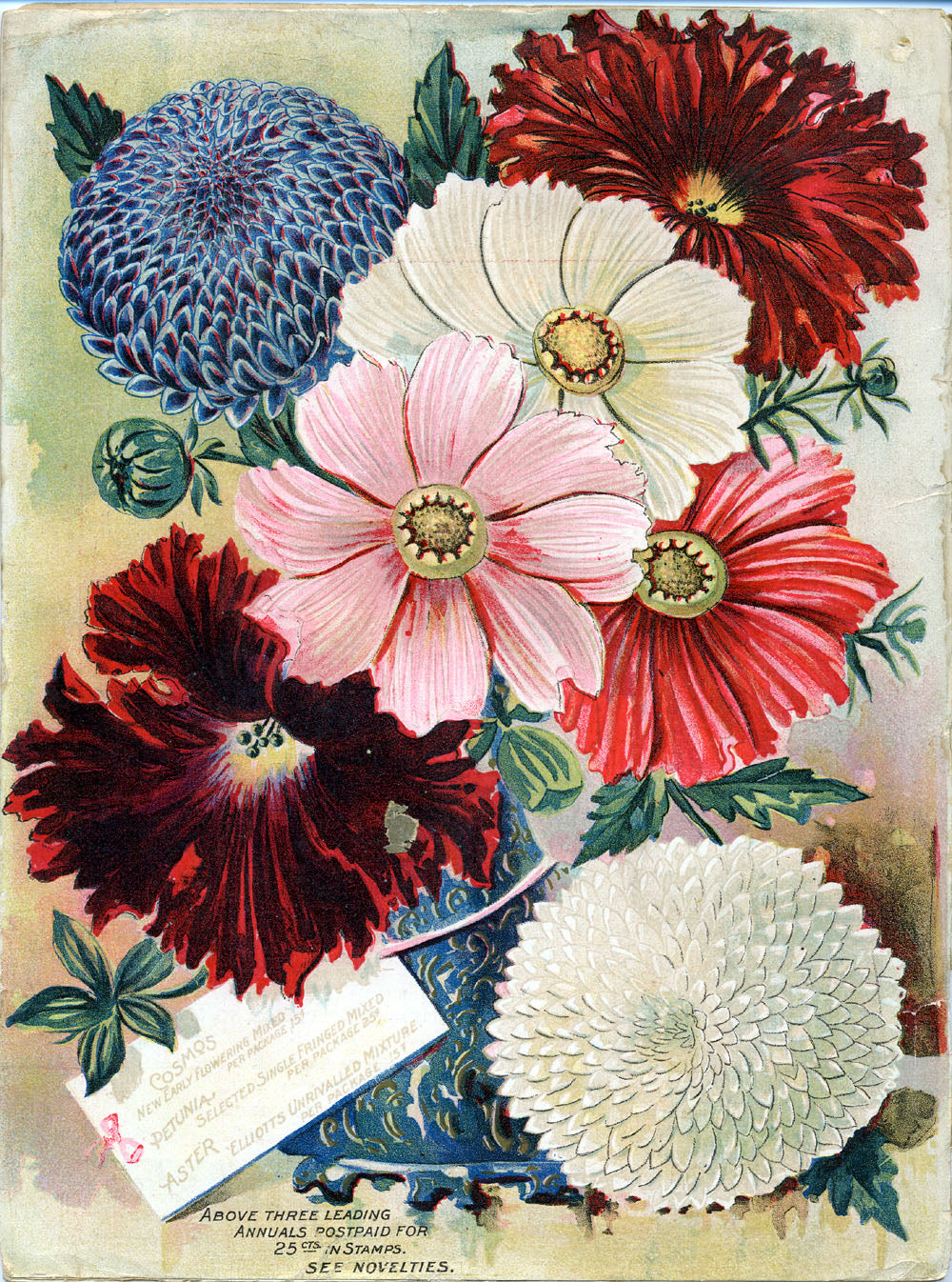
In 1498, Aldus Pius Manutius was the first to publish a catalogue of works by Aristophanes, Plato and other classical Greek philosophers, which he printed with his publishing house “Les Presses Aldines”. Two centuries later, in 1744, the American writer, printer, inventor and politician Benjamin Franklin himself produced a catalogue of scientific and academic books comprising more than 600 volumes, with the aim of bringing knowledge within everyone’s reach...
In a totally different vein, in 1667, the English horticulturist and gardener William Lucas published “A Catalogue of Seeds, Plants”, in which he listed plant prices for his customers in eleven sections. Catalogues of seeds (flowers, plants, fruit, vegetables, etc.) were one of the first great successes of mail order sales. At the end of the 19th century, American, French and English catalogues competed with each other in terms of the ardour and magnificence of the graphic composition and colour illustrations of the flowers in these catalogues, copies of which are now kept in all the major libraries.
Jules Renard
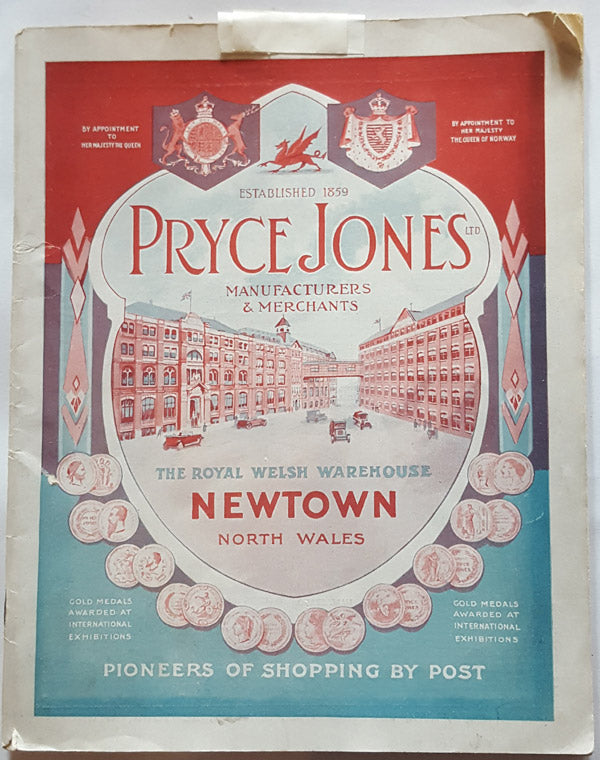
In 1845, a small blue book, the Tiffany’s “Blue Book”, was printed by Tiffany’s, the jewellery house established in 1837. This first mail-order catalogue revolutionised the idea of commerce and luxury by bringing the most beautiful jewels from the “King of Diamonds” within reach of the dreams.
Sixteen years later, Sir Pryce Pryce-Jones, a Welsh entrepreneur, set up a mail order company - using the trains and post of the time - for his clothes made from a fine flannel he manufactured. It was a huge success. Nursing pioneer Florence Nightingale was one of his customers, as was Queen Victoria, whose underwear he supplied was “particularly soft”, according to historian David Pugh.
Elizabeth Taylor
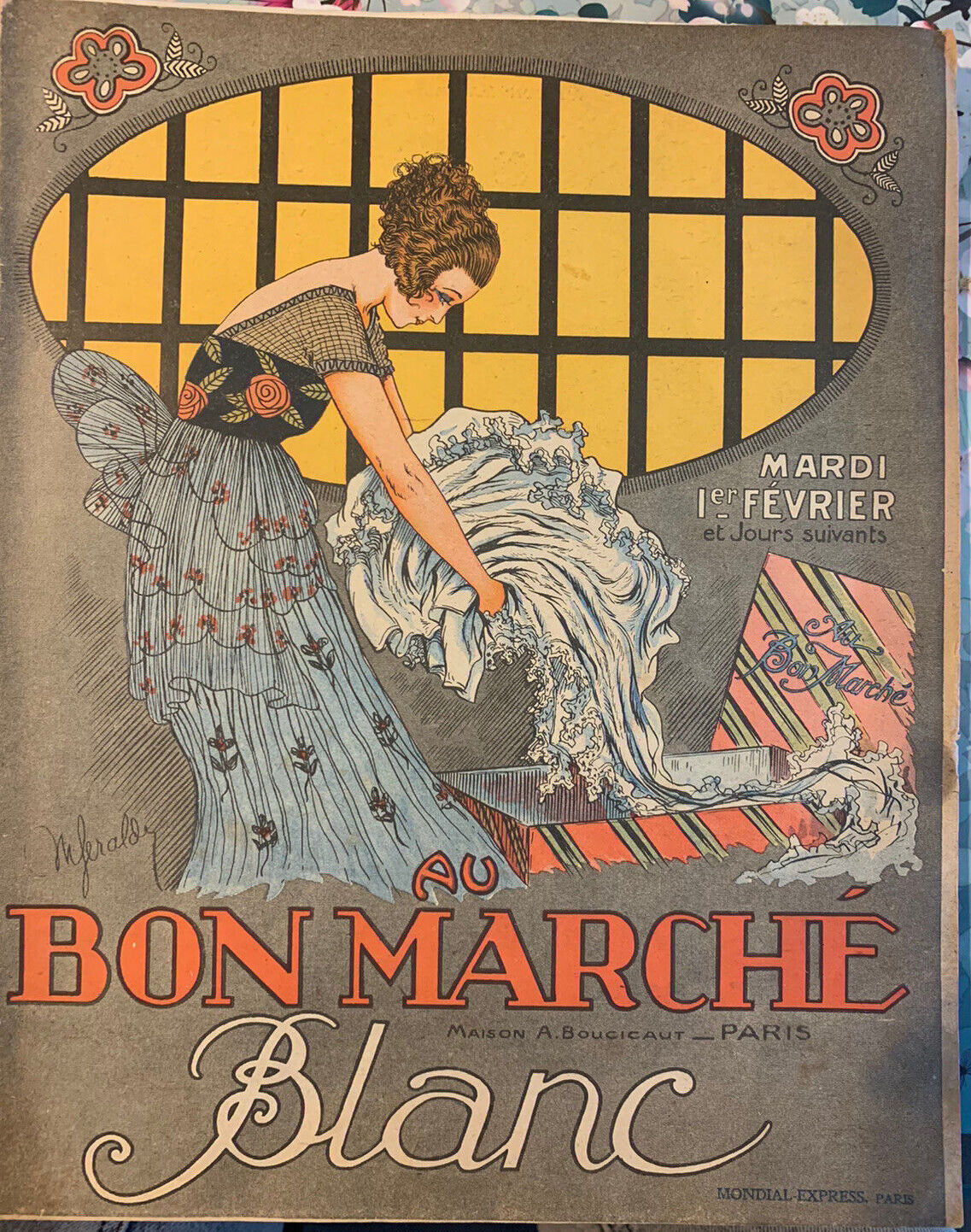
Inaugurated in 1838 by the Videau brothers then led to interstellar success by the intuition of Aristide Boucicaut, Le Bon Marché revolutionised the luxury and fashion markets and enthroned the long reign of department stores where the “customer is king”. Boucicaut had an ambitious vision and in 1871, opened a mail-order service with two departments, one for France and the second for the rest of the world. It was a tremendous success: in 1894, Le Bon Marché distributed 1,500,000 catalogues. At the beginning of the 20th century, the catalogue took on new colours, and excellent artists were hired to illustrate it. Department stores catalogues became a glamorous mirror of the fashion of the time. In this game, the French and the Americans were first on the podium.
In 1872, Aaron Montgomery Ward set up a mail-order business in Chicago selling a variety of goods, which he bought from manufacturers and resold directly to customers. By 1904, his catalogue mailing list contained three million customers. He was followed by other giants in the making: Eaton in Canada, which called its first catalogue “The Wish Book” in 1884, and then Sears in 1888 (which soon sold sewing machines, bicycles and even cars). In France, La Redoute published its first mail-order catalogue in 1928, followed by Les 3 Suisses in 1932. Everything was now accessible from anywhere in the world, from clothing to sports equipment, radios, record players and bridal trousseaux…
Andy Warhol
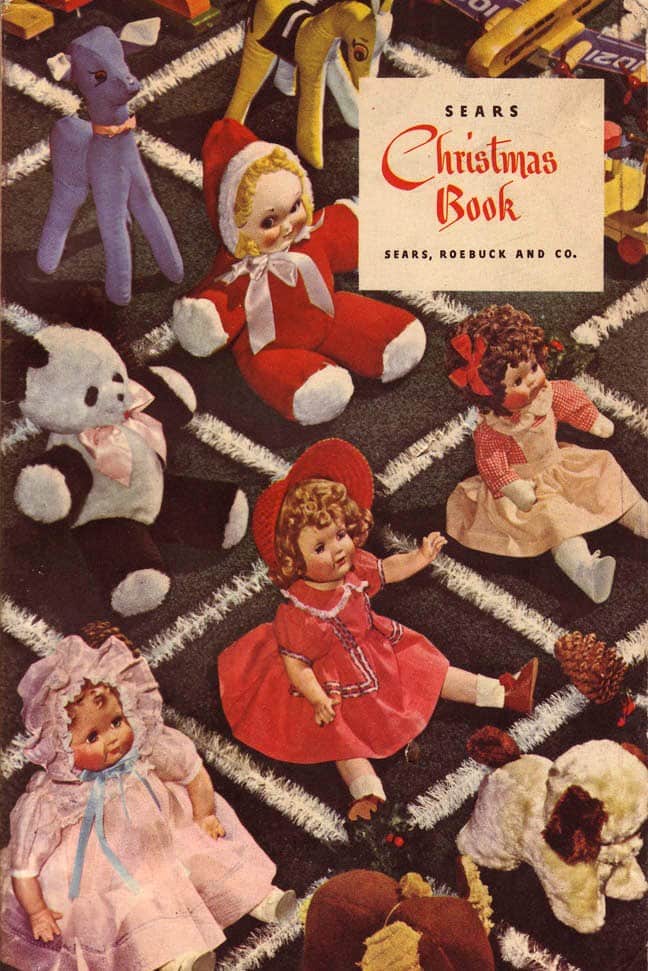
However, what works best, of course, and what lights the spark and brings happiness in the eyes of children across the world, are toys. The legendary toy department stores in New York, FAO Schwarz, launched its first catalogue in 1876. It the beginning of the 20th century, the French took the plunge and the most famous department stores (Bon Marché, Samaritaine, Grands Magasins du Louvre, Trois Quartiers, etc.) came up with “toy and gift catalogues” that were distributed at the end of the year before Christmas. Children can therefore dream for months about new products, pretty dolls, teddy bears and electric trains, and tick off their favourites fervently. Reflecting their times, they were created by talented graphic designers and illustrators who included surprising temporal elements in their images (soldiers and planes in wartime, for instance). Today, these French toy catalogues are carefully preserved, notably in the collection of the Forney library in Paris, as fragile, moving testimonies of these childhood reveries and the spirit of the times.
Morning, Arthur Rimbaud
Sign up to receive future newsletters of The Officine

We will send you an email to reset your password
Your cart is currently empty
Upon request, your purchases are wrapped in a printed paper reproducing an old newspaper or slipped into an elegant, green-marbled gift pochette, as an homage to the creation and history of the Officine Universelle Buly.
The Exceptional origata gift wrapWHETHER FLORAL, STRIPED OR CHECKERED, AND ALWAYS HIGHLY CHROMATIC, THESE JAPANESE PAPERS ARE INSPIRED BY THE MOTIFS RESERVED FOR KIMONOS AND ARE FOLDED ACCORDING TO THE HIGHLY CODIFIED ART OF ORIGATA.
Monogram gift wrapThe initials of the fortunate recipient are embossed on the elegantly textured gift paper. Gilded in the old-fashioned style, the initials are then highlighted with a velvet ribbon.
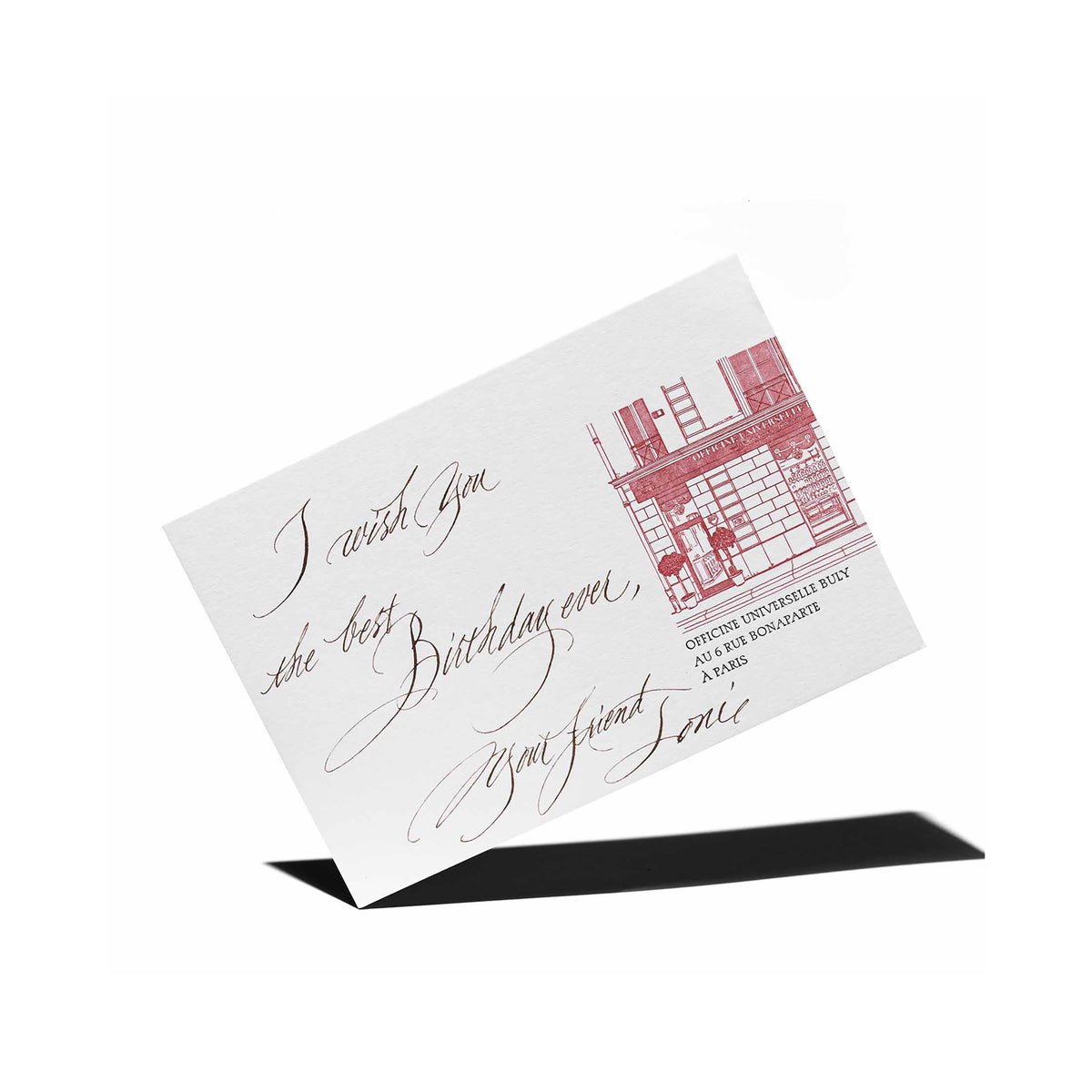
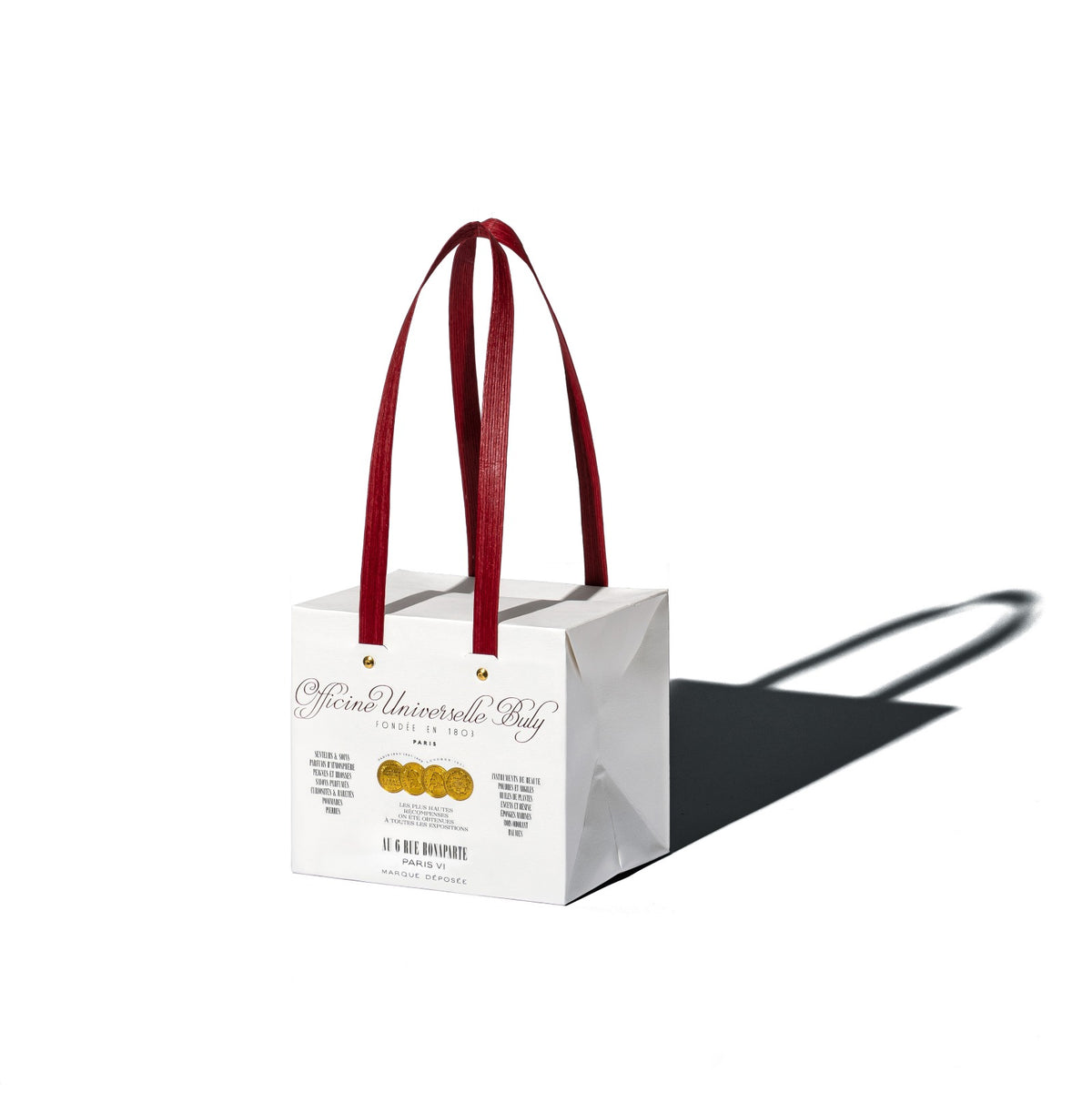
Choose the size of your bag
XS: Miniature case for small comb, soap or baume des muses ∙ 1,67 €
S: Travel companion for perfumed vials ∙ 1,67 €
M: Distinguished bag for scented candles and large books ∙ 1,67 €
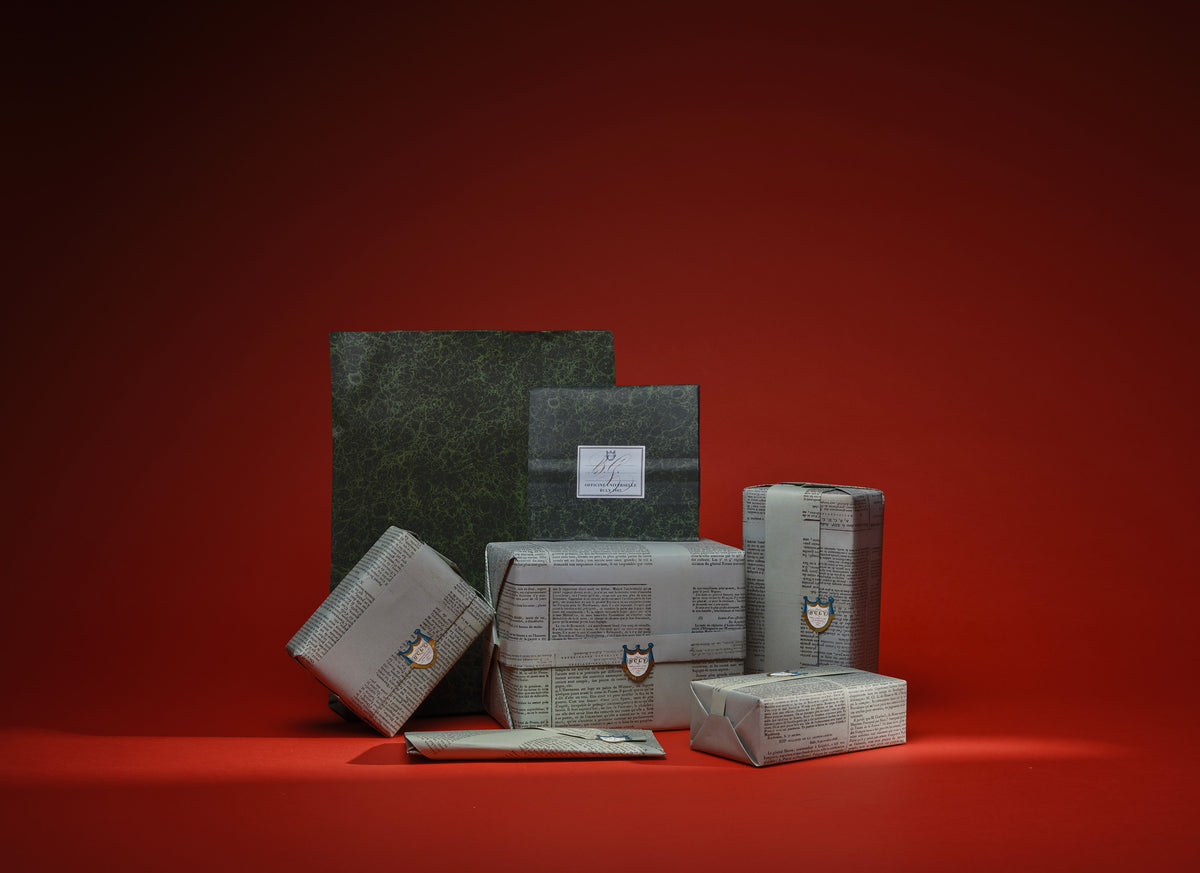
Select the products to be gift wrapped
These products are already gift-wrapped
None of the product in the cart are compatible with this service
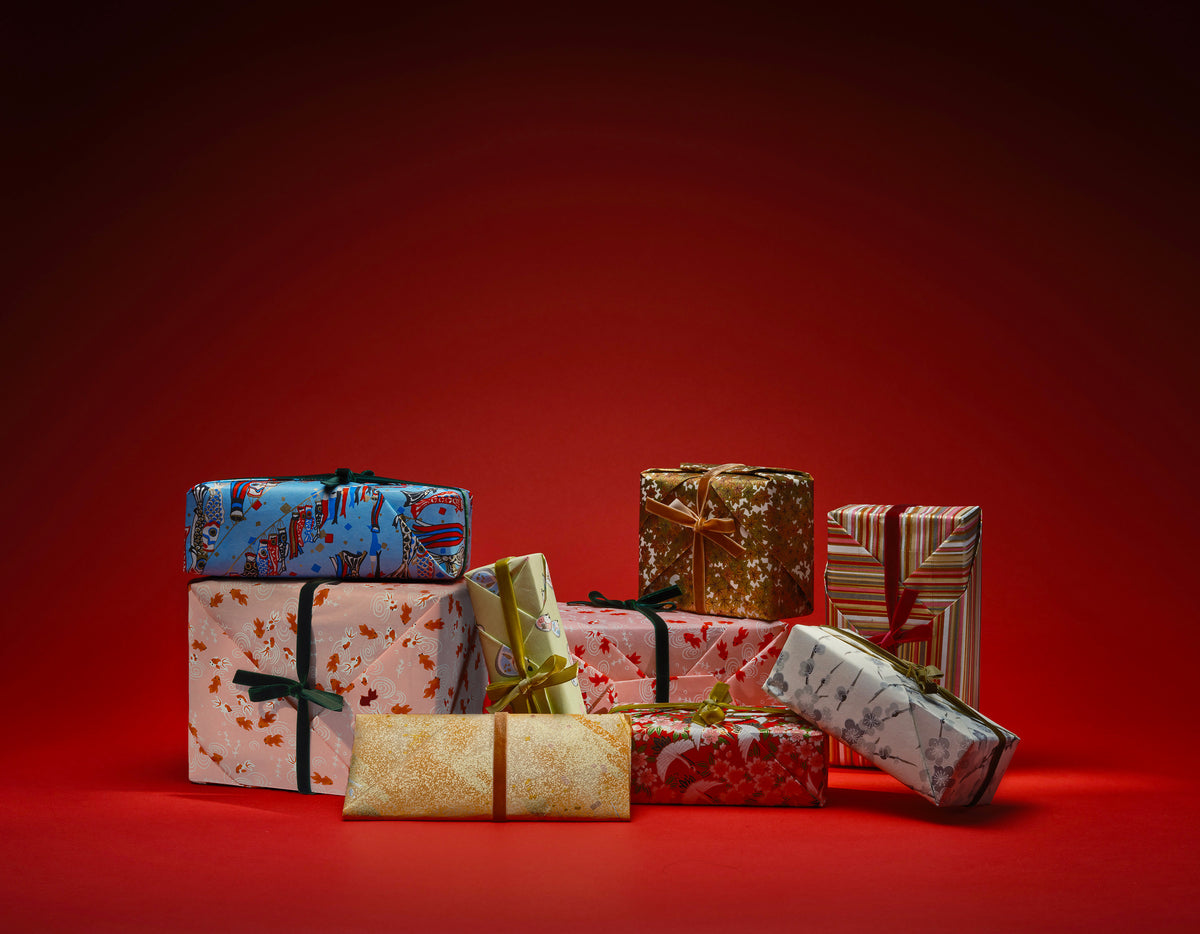
Select the products to be gift wrapped
These products are already gift-wrapped
None of the product in the cart are compatible with this service

Select the products to be gift wrapped
These products are already gift-wrapped
None of the product in the cart are compatible with this service
Every request will be respected as far as possible and the possibilities are great at Officine Universelle Buly.
Quantity :

Have your initials or those of the lucky recipient engraved in the heart of your Savon Superfin.
Have your accessory engraved with your initials, your name, or those of the person you’re gifting it to.
Have your initials or those of the lucky recipient of this gift engraved on the kit, the balm, the comb and on the toothbrush
Our bottles, candles and incenses are carefully packaged with handwritten calligraphy labels.
Our master calligrapher, armed with a quill and ancient ink pads, will create a wonderful bookplate on the title page.
We mail your calligraphic message directly to your recipient.
Please enter valid characters only
However, it seems that you are in Japan, would you like to switch to our Japanese website based in Tokyo?
Visit our StoreWe think you're in .
Update your delivery location?